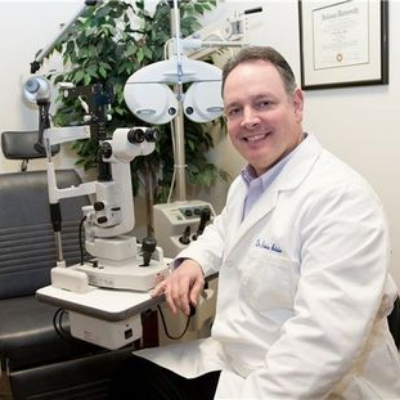Why Picking an Eye Doctor Optometrist is Necessary for Your Eyes
Why Picking an Eye Doctor Optometrist is Necessary for Your Eyes
Blog Article
Exploring the most recent Technological Innovations in Optometry and What They Mean for Eye Doctors
From the accuracy of Optical Comprehensibility Tomography to the nuanced insights provided by AI-driven diagnostic tools, these advancements are setting brand-new criteria in individual analysis and treatment. As these advancements penetrate the technique, eye doctors are faced with the challenge of welcoming these devices to improve patient end results.
Technologies in Diagnostic Devices
Advancing the area of optometry, innovations in diagnostic devices have actually transformed the means eye treatment professionals examine and detect eye problems and aesthetic impairments. The previous decade has actually seen considerable technical advancements, making it possible for more exact and detailed analyses.
One more secret innovation is the intro of sophisticated corneal topography systems, which map the surface curvature of the cornea with accuracy. These tools are particularly useful for fitting get in touch with lenses and detecting corneal problems. Furthermore, electronic retinal imaging has actually changed typical ophthalmoscopy, supplying detailed, breathtaking sights of the retina that assist in complete visual examinations.
The development of wavefront aberrometry has actually likewise been crucial, making it possible for the analysis of refractive errors with unmatched accuracy (Eye Doctor Optometrist). This technology helps in personalizing restorative lenses and improving surgical results for refractive surgical procedures. Collectively, these diagnostic innovations encourage eye doctors to supply premium client treatment, ensuring early intervention and customized treatment techniques, inevitably enhancing visual wellness outcomes
AI in Patient Administration
Structure on the foundation of advanced diagnostic devices, the unification of expert system (AI) in client monitoring represents a transformative jump for optometry. AI systems are progressively utilized to boost efficiency, accuracy, and personalization in client treatment. By evaluating vast quantities of information, AI can identify patterns and forecast possible eye conditions, allowing eye doctors to tailor treatments better. This capacity is crucial in taking care of persistent eye illness such as glaucoma and diabetic person retinopathy, where very early detection and constant tracking are key.
Additionally, AI-driven systems facilitate streamlined person interactions and management procedures. Automated scheduling, digital assessments, and personalized follow-up plans not only boost person contentment but additionally enhance time administration for experts. These systems can triage people based on the urgency of their conditions, making certain that those in important requirement receive timely focus.
Furthermore, AI improves decision-making by providing optometrists with evidence-based recommendations and therapy pathways. By integrating information from digital wellness documents, AI devices offer understandings that notify medical choices, reducing the danger of mistakes and boosting patient end results. As AI remains to advance, its duty in person monitoring will likely expand, improving the landscape of optometric care.
Developments in Retinal Imaging
In the realm of optometry, retinal imaging has witnessed amazing technological improvements that are improving analysis capabilities and individual care. Advancements such as Optical Comprehensibility Tomography (OCT) and fundus photography have actually reinvented exactly how eye doctors evaluate the retina and picture. OCT, specifically, gives high-resolution, cross-sectional pictures of the retina, enabling the thorough exam of its layers. This ability is important for very early discovery and monitoring of problems like glaucoma, diabetic retinopathy, and age-related macular degeneration.
Enhanced imaging techniques like OCT angiography are more refining analysis accuracy. This non-invasive method maps blood flow in the retina, providing crucial understandings into vascular wellness without the requirement for color injections. In addition, adaptive optics innovation is being integrated right into retinal imaging systems to remedy ocular aberrations, supplying extraordinary photo quality. Such improvements assist in the recognition of minute retinal modifications that might signify illness progression.
Moreover, improvements in synthetic knowledge are augmenting retinal imaging by making it possible for computerized analysis of big datasets. These systems aid eye doctors in identifying patterns a sign of pathology, therefore boosting analysis precision and effectiveness. Jointly, these technologies are changing retinal imaging into a keystone of modern-day eye treatment, improving end results and increasing restorative possibilities.
Teleoptometry's Expanding Function
Teleoptometry is significantly coming to be a vital element of eye treatment, driven by advancements in data and diagnostic tools. As optometry welcomes digital improvement, teleoptometry helps with remote consultations, permitting eye doctors to expand their solutions past traditional borders. This is especially helpful in country and underserved areas where accessibility to specialized eye care is typically minimal. By leveraging high-resolution video conferencing and progressed retinal imaging, eye doctors can conduct extensive eye examinations from afar, guaranteeing timely diagnosis and treatment.
The assimilation of expert system (AI) further boosts teleoptometry, making it possible for the evaluation of visual data and aiding in the detection of ocular problems such as glaucoma and diabetic person retinopathy. AI-powered formulas can swiftly translate complex imaging information, supplying eye doctors with beneficial insights that reinforce professional decision-making.
Additionally, teleoptometry supports connection of care via smooth integration with electronic health records (EHRs), allowing eye doctors to preserve thorough patient histories. When consulting with various visit this site professionals., this makes certain that patients get individualized and consistent treatment even.
Regardless of these benefits, obstacles continue to be, including making sure information safety and security and taking care of client assumptions. Nonetheless, teleoptometry represents a considerable stride in the direction of even more easily accessible, reliable, and patient-centered eye treatment. As modern technology develops, its function is positioned to expand even more.

Future Trends in Eye Treatment
A myriad of cutting-edge trends is set to improve the future of eye care, driven by technological innovations and the evolving requirements of individuals. One significant fad is the combination of expert system (AI) in diagnostics, which guarantees to improve the precision and effectiveness of eye examinations. AI formulas can assess substantial quantities of information from retinal images, possibly discovering problems like diabetic retinopathy and glaucoma earlier than traditional approaches.
In learn the facts here now addition, personalized medication is acquiring grip in optometry, with hereditary screening educating tailored therapy strategies. This approach intends to optimize person results by customizing interventions to specific hereditary accounts. Wearable modern technology, such as wise call lenses, is likewise imminent, offering real-time surveillance of intraocular pressure or sugar levels, therefore supplying continual insights into systemic and eye health.
The fostering of augmented truth (AR) and digital reality (VIRTUAL REALITY) in training and patient education is an additional arising fad. These modern technologies offer immersive experiences that can improve understanding and abilities both for eye doctors and clients. As these trends evolve, optometrists should remain abreast of technological advancements to provide cutting-edge treatment, guaranteeing improved individual results and contentment in the dynamic landscape of eye care.
Conclusion

Jointly, these analysis advancements empower optometrists to deliver remarkable patient care, ensuring very early intervention and customized treatment methods, inevitably enhancing aesthetic wellness outcomes.

As these technologies continue to progress, eye doctors should adjust and include them right into technique, eventually maximizing operations performance and boosting the requirement of eye care provided to clients.
Report this page